Singapore's commemorative coins record historic moments big and small
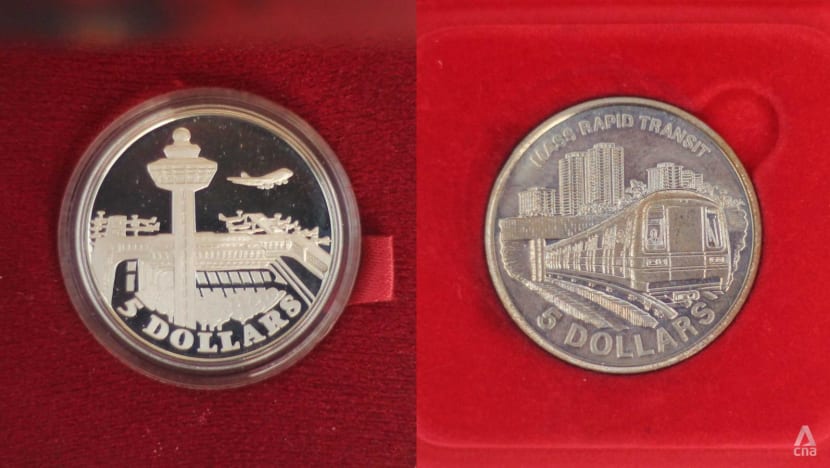
Commemorative S$5 coins featuring Changi Airport and the MRT system. (Photos: CNA/Kurt Ganapathy)
SINGAPORE: Whether you are a coin collector or just someone who takes an interest in Singapore history, the unveiling of a commemorative coin this week to mark Mr Lee Kuan Yew's 100th birth anniversary would have caught your attention.
Celebrating the life and legacy of Singapore's founding prime minister, the LKY100 coins will feature something that has never been seen before.
"This is the first time a portrait is featured on a Singapore coin," a Monetary Authority of Singapore (MAS) spokesperson told CNA.
"Mr Lee played a significant role in nation-building as Singapore's founding prime minister. The LKY100 commemorative coin is meant to serve as a reminder of Mr Lee's values and vision, and to inspire the younger generation of Singaporeans to continue the work of our founding leaders in nation-building," the spokesperson added.
But while the coins are without precedent in one sense, they will also become the latest in a long line of commemorative releases that combine to tell the story of a young nation finding its way in the world.
The Chinese Almanac coins are probably the best-known of Singapore's special coins, heralding the arrival of the Chinese New Year festive season annually for the last four decades, but there have been dozens of events and anniversaries that have been recorded on legal tender.
"Commemorative notes and coins are typically issued by MAS to mark significant national events and achievements," the central bank spokesperson said.
"For example, MAS issued the Hawker Culture in Singapore commemorative coins in 2021 to celebrate the inscription of hawker culture in Singapore into the UNESCO Representative List of the Intangible Cultural Heritage of Humanity.
"The Singapore Bicentennial commemorative note in 2019 was to commemorate Singapore's bicentennial, and the SG50 commemorative notes and coins in 2015 were to mark Singapore's 50 years of nation-building."
The banknotes that have been issued in Singapore over the years often illuminate the bigger picture of what was happening when they were printed, but commemorative coins by their nature detail specific moments in the country's history.
Here is a look back at some of them.
1969: The 150th anniversary of the founding of modern Singapore
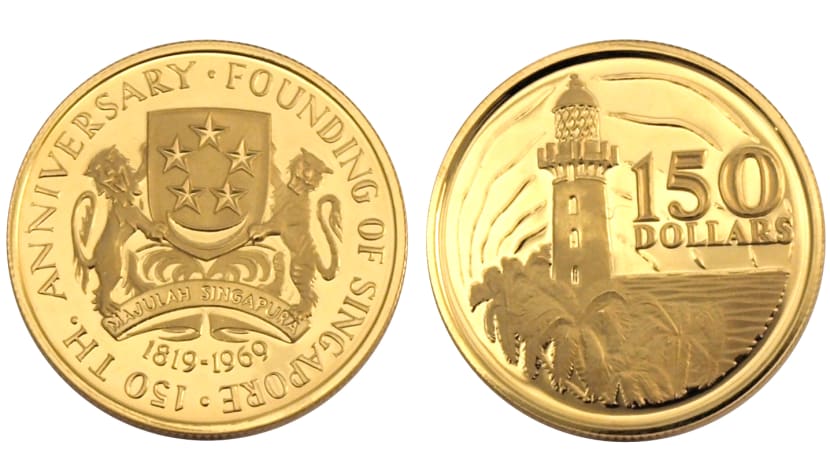
In 1969, independent Singapore was just four years old, and the fledgling Singapore dollar two years younger still.
But in the midst of that tumultuous era, Singapore released its first commemorative coin – in 916 or 22-carat gold no less.
The subject? The 150th anniversary of the founding of modern Singapore, aptly represented by a face value of S$150 and the lighthouse that bears the name of Stamford Raffles.
A total of 198,000 of these coins were issued on Aug 8, 1969, with an issue price of S$151.50, according to MAS.
1975: The 10th anniversary of Singapore's independence
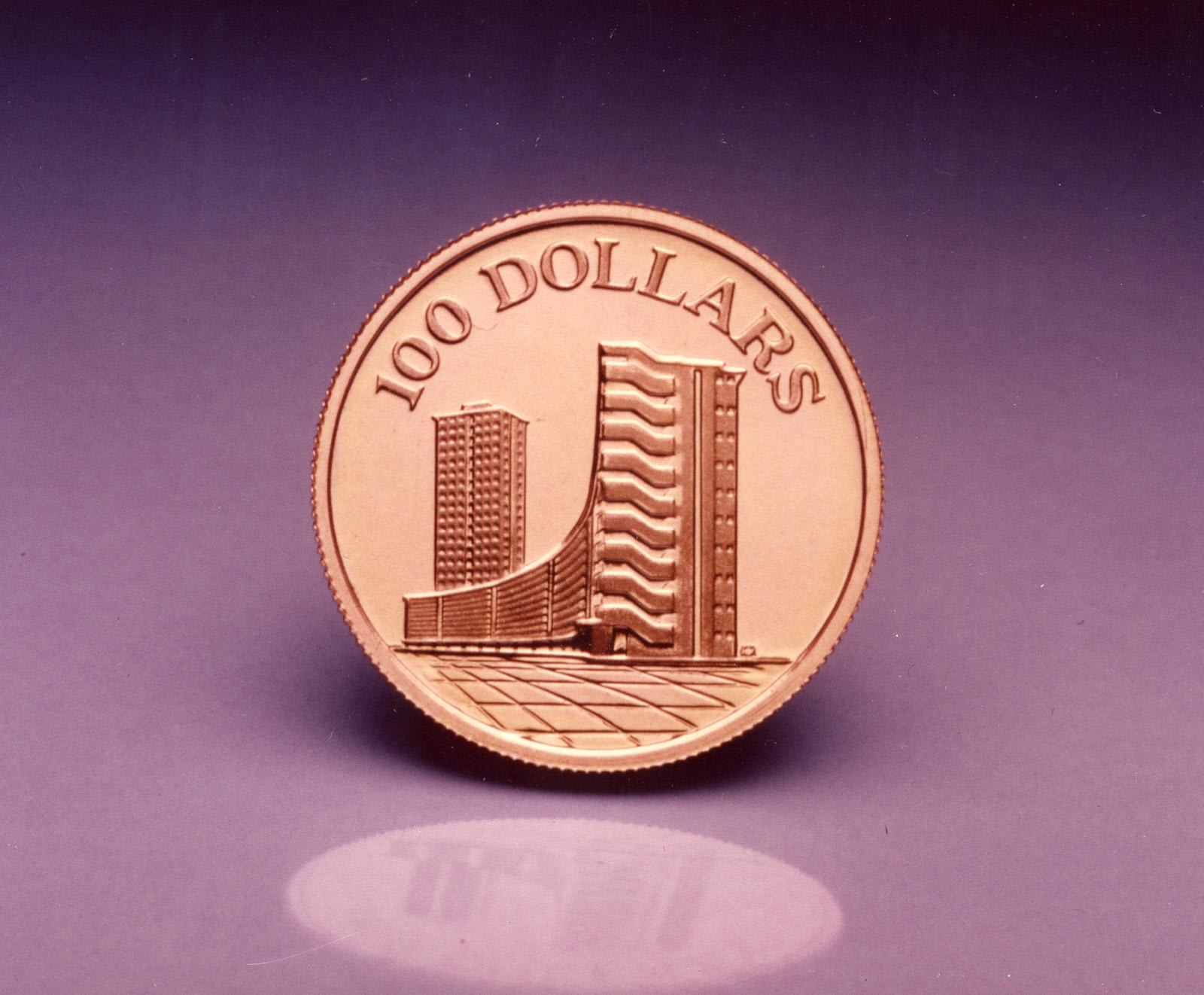
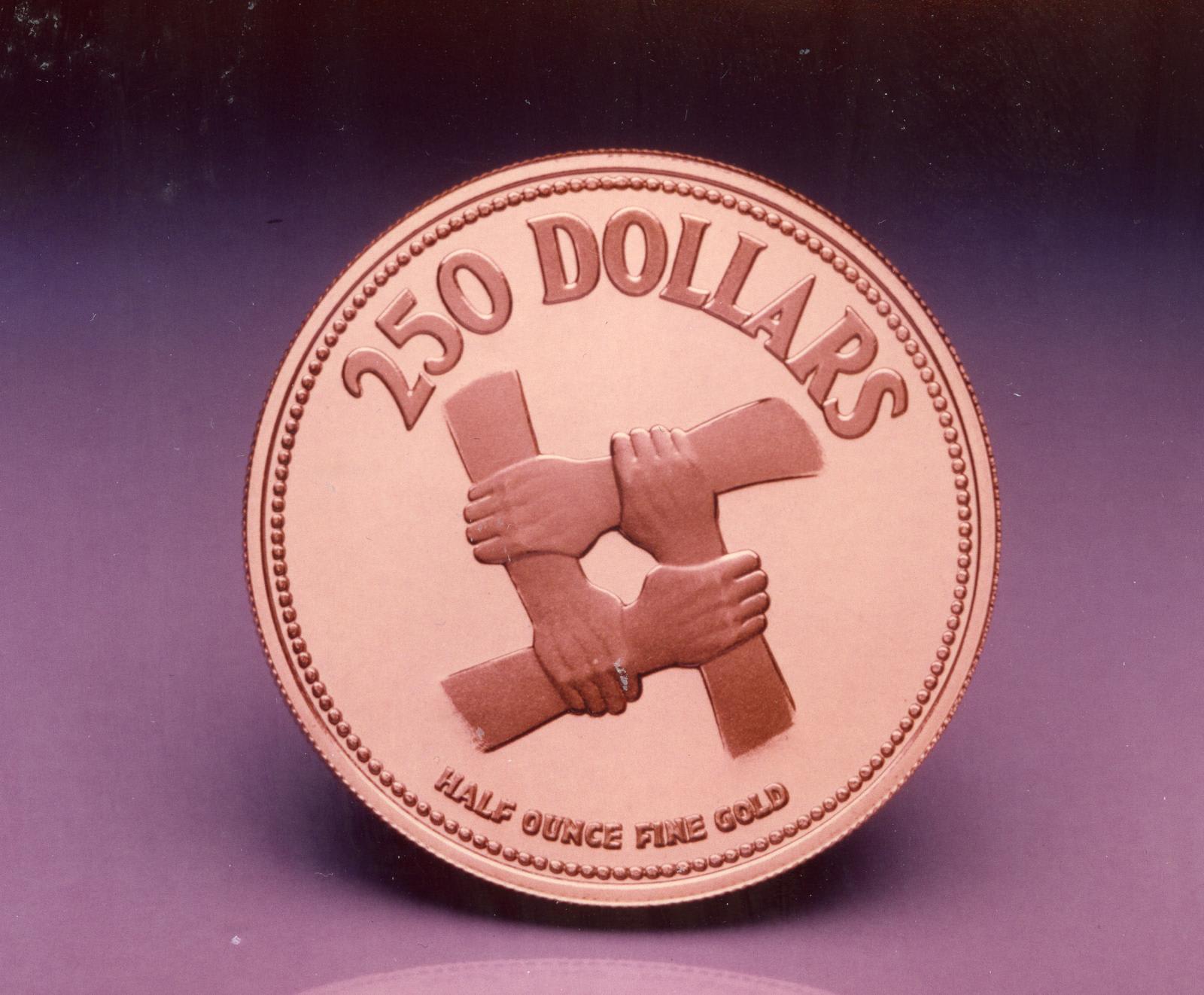
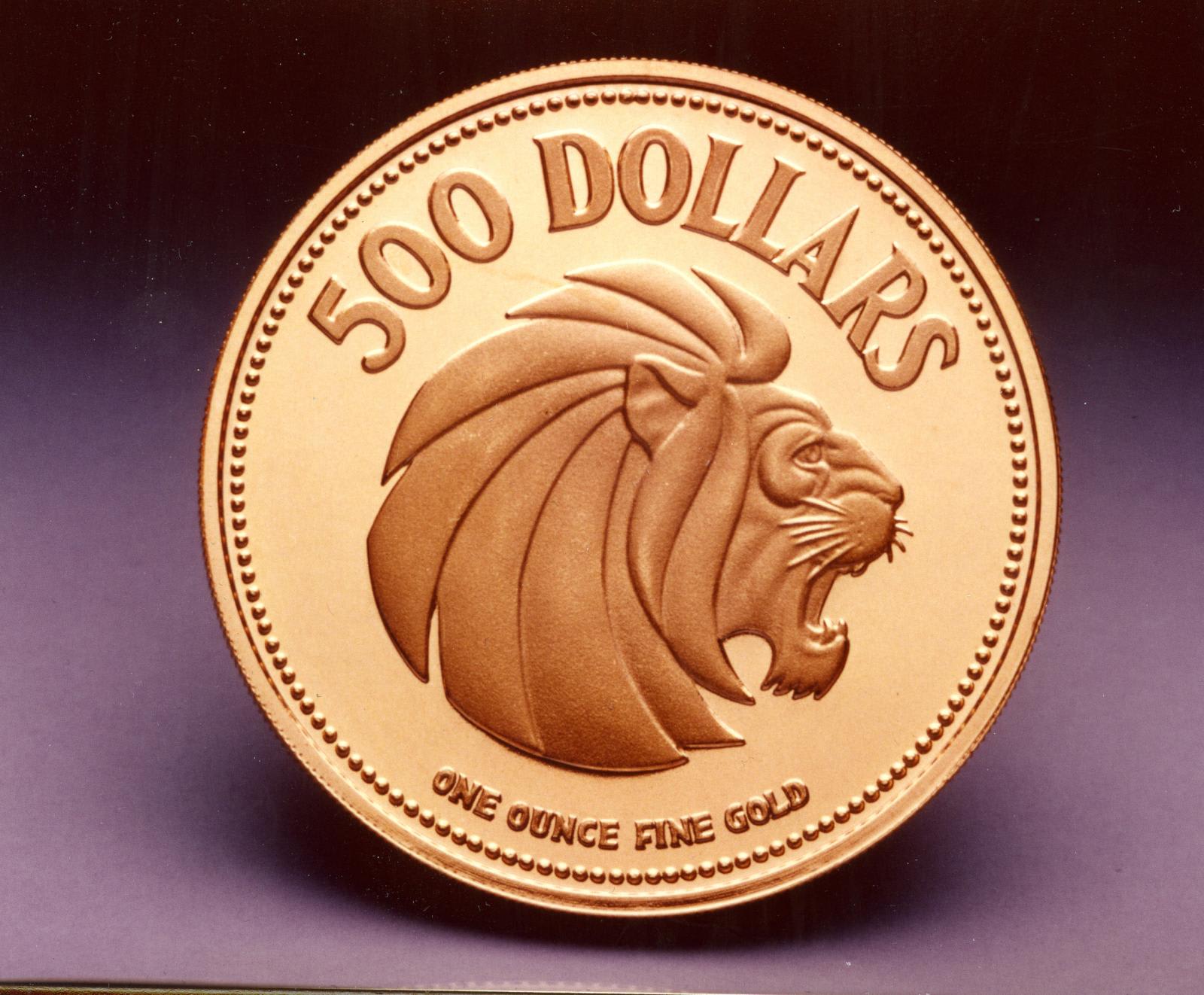
Singapore would soon look beyond its colonial past, however, as it began issuing more accessibly priced coins marking national milestones.
In 1973, silver coins were minted to celebrate Singapore's hosting of the 7th SEAP Games – today's SEA Games – and the official opening of the National Stadium.
Two years later, Singapore celebrated the 10th anniversary of its independence with a variety of coins released through the year in silver and gold, with face values ranging from S$10 to S$500.
The coins featured one of four designs: A stylised lion's head, four clasped hands symbolising multiracialism, blocks of flats and a ship.
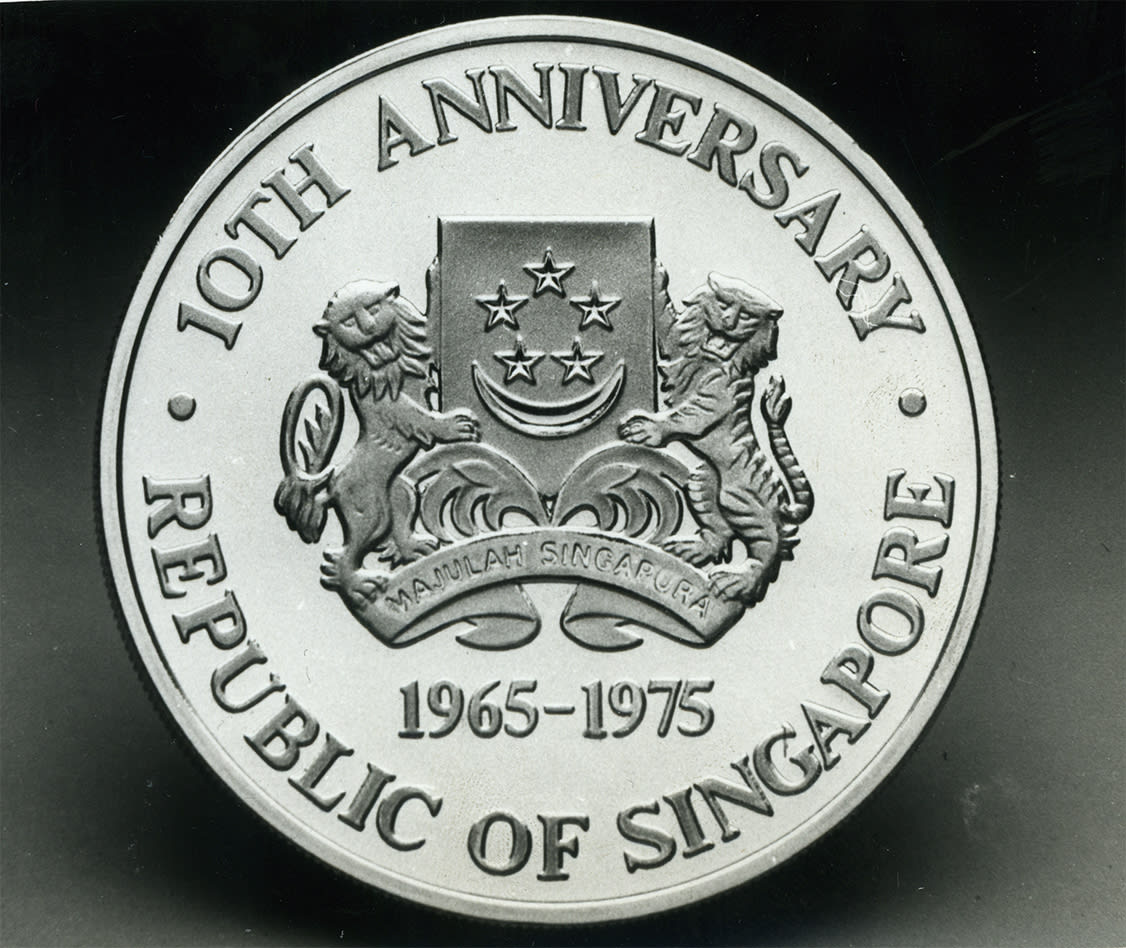
The most affordable of these, a S$10 uncirculated silver coin with a mintage of 200,000, was priced at just S$0.30 over face value.
With the National Day Parade of 1975 decentralised to ensure that more people could participate in Singapore's 10th birthday celebrations, this was very much in the spirit of the festivities.
Singapore would continue to commemorate its milestone birthdays with new coins, with the SG50 series being the latest.
1977: The 10th anniversary of ASEAN
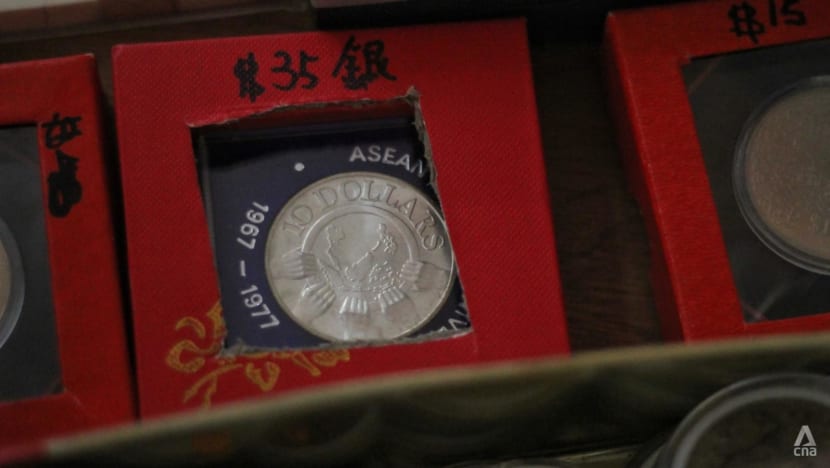
Singapore was a founding member of the Association of Southeast Asian Nations (ASEAN) and Mr S Rajaratnam, Singapore's foreign minister in 1967 when the ASEAN Declaration was signed, is regarded as one of the organisation's founding fathers.
So it was fitting then that as the group of emerging nations marked a decade of friendship and cooperation in 1977, Singapore released silver S$10 coins to celebrate the occasion.
These coins featured a ring held by five hands – a nod to ASEAN's five founding members – with a map of the region within.
Singapore also commemorated ASEAN's 20th and 30th birthdays in its coinage.
1981: The official opening of Changi Airport
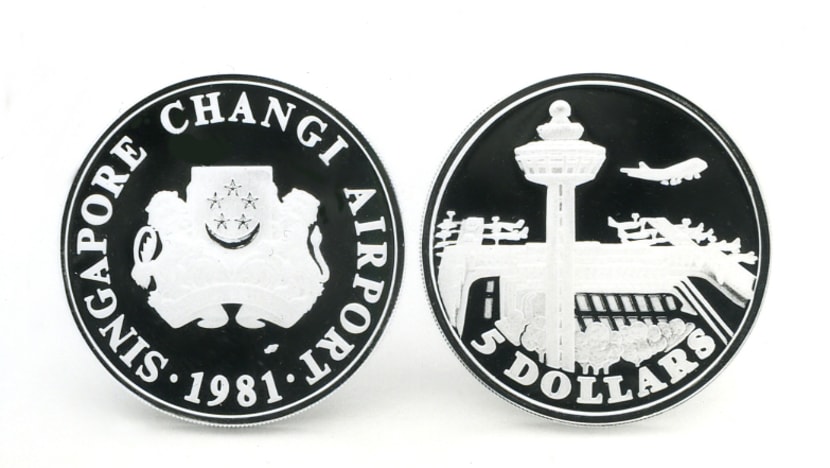
As a source of national pride and a popular destination in itself for locals, it is no surprise that Changi Airport features in Singapore's coinage history. Its official opening in 1981 was celebrated with S$5 coins showing the airport's now-iconic control tower.
The coins were minted in silver and, for the first time for a commemorative coin, cupro-nickel. This mix of precious metals and base metals would be a regular feature of commemorative coins going forward.
However, the LKY100 coins will notably only be minted in aluminium bronze. The material makes for a more affordable format, keeping in line with the coin's purpose, according to MAS, which touts it as a "reminder of Mr Lee's values and vision".
Major infrastructure projects and new landmarks would appear on coins again in the years to come. Among them were the Benjamin Sheares Bridge in 1982, the new Parliament House in 1999 and the Esplanade - Theatres on the Bay in 2002.
One major project beyond Singapore's shores, the China-Singapore Suzhou Industrial Park, had its 10th anniversary marked with a coin release in 2004.
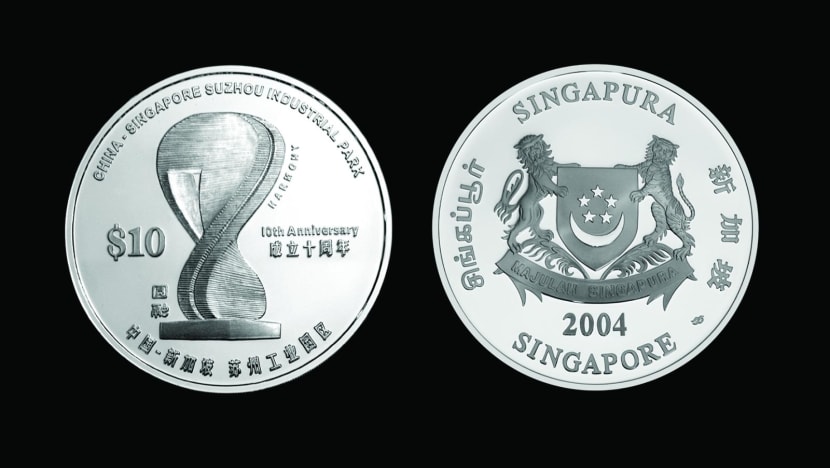
Singapore Airlines, meanwhile, would be honoured for its 50th anniversary in 1997, while Changi Airport would return to coins in 2008 with the opening of Terminal 3.
Since 2013, the airport has featured on the 20-cent coin of Singapore's Third Series of circulating coins.
Incidentally, 1981 also saw the release of the first Singapore coins marking Chinese New Year. These Year of the Rooster coins were available in gold, silver and nickel.
1985: Commemorating 25 years of public housing
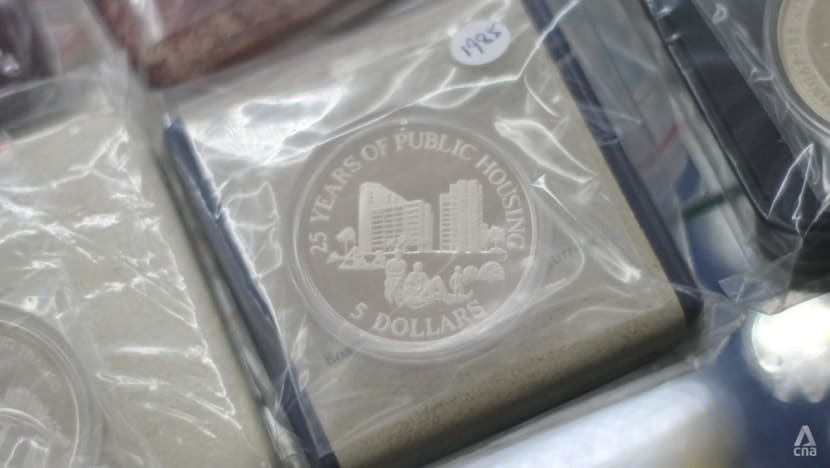
As evidenced by its use to celebrate Singapore's 10th year of independence, public housing was one of Singapore's early success stories.
And by the mid-1980s, public housing had also featured on the 1-cent coin of Singapore's First Series of circulating coins, the S$1 Orchid Series banknote and the S$10 Bird Series banknote.
So when the 25th anniversary of the Housing and Development Board (HDB) rolled around in 1985, the time was right to commemorate public housing itself.
Issued on Oct 1, 1985, in silver and cupro-nickel, the 25 Years of Public Housing S$5 coins depicted a familiar scene in a Singaporean housing estate.
The 50th anniversary of public housing would also be commemorated in 2010.
1989: Commemorating the MRT
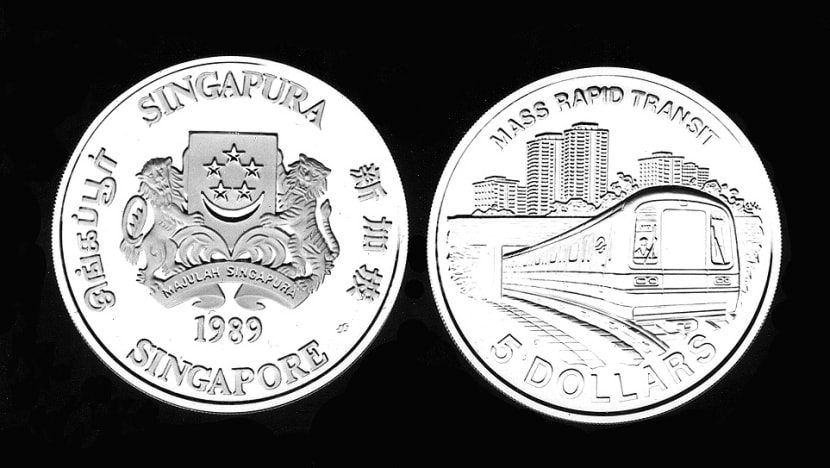
Singapore's Mass Rapid Transit (MRT) system began operations on Nov 7, 1987, with trains running on a 6km route between Yio Chu Kang and Toa Payoh via Ang Mo Kio, Bishan and Braddell.
Later that year, nine more stations opened: From Novena to Raffles Place on the North-South Line and Outram Park to Raffles Place on the East-West Line.
Six more East-West stations, from Tiong Bahru to Clementi would follow on Mar 12, 1988, as the MRT was officially opened by then Prime Minister Lee Kuan Yew.
By the next month, at least 200,000 people were using the MRT each day, and as more stations opened in 1989 – giving the system the shape that many in Singapore today would have grown up with – coins were released to mark this new way of getting around the country.
A total of 90,000 S$5 coins were issued, 60,000 in cupro-nickel and 30,000 in silver.
2008: Commemorating the first Formula 1 Singapore Grand Prix
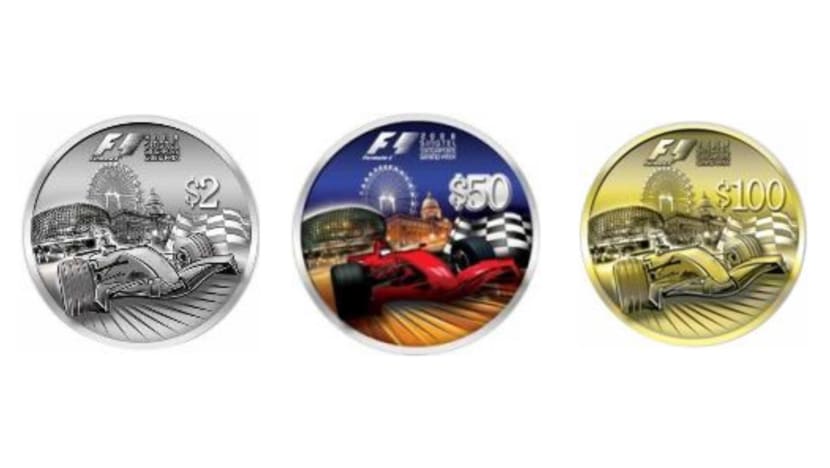
Before infinity pool selfies and Crazy Rich Asians backdrops helped to take the Singapore brand global, sports fans around the world got a taste of what the country had to offer via a river of light in the heart of the city.
The first Formula 1 Singapore Grand Prix in 2008 drew 300,000 people to the Marina Bay Street Circuit, with millions more watching the race weekend unfold on TV.
It was a milestone for F1 too, with 2008's race being its first grand prix held at night.
Three coins were released to commemorate the event including a S$100 gold proof coin and a S$50 silver proof colour coin.
Renault's Fernando Alonso took the inaugural race win ahead of Williams' Nico Rosberg and McLaren's Lewis Hamilton in what would later become controversial circumstances.
Fourteen years later, as Singapore emerged from the COVID-19 pandemic, the significance of hosting the race again after cancellations in 2020 and 2021 was not lost on the Ministry of Trade and Industry.
"The successful staging of the first F1 Singapore Grand Prix signals to the world that Singapore is back in business," the ministry declared.
Over the three-day 2022 race weekend, attendance surged to 302,000, breaking the record set in 2008.
2012: Celebrating the arrival of the giant pandas Kai Kai and Jia Jia

The Singapore Zoo has long been one of the country's top attractions, and many of its residents have become celebrities over the years.
Two more "personalities" were added to this list when the neighbouring River Safari – now River Wonders – began welcoming visitors in 2012.
The arrival of giant pandas Kai Kai and Jia Jia was commemorated with three coins issued on Sep 6, 2012, including a silver proof colour coin with a unique oval shape.
The two pandas and the ups and downs of their mating attempts would make the news regularly in the years ahead, and they would finally welcome their first cub, Le Le, in 2021.
Originally slated to remain in Singapore for a decade, Kai Kai and Jia Jia's stay in the country was extended for five more years in 2022.
2016: Celebrating the inscription of the Singapore Botanic Gardens as a UNESCO World Heritage Site
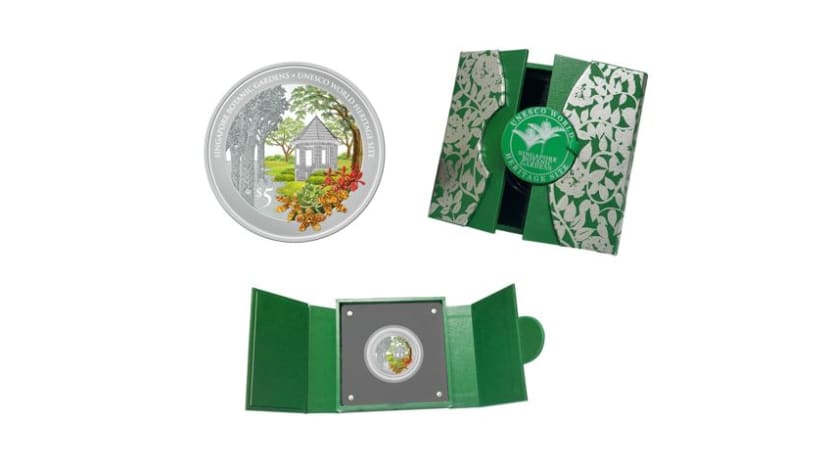
For decades, Singapore stood on the sidelines as cultural and natural sites in neighbouring countries were recognised with UNESCO World Heritage status.
But finally, after a three-year-long process, the Singapore Botanic Gardens was inscribed as the country's first UNESCO World Heritage Site on Jul 4, 2015.
In describing its outstanding universal value, UNESCO said: "The Singapore Botanic Gardens has been a centre for plant research in Southeast Asia since the 19th century, contributing significantly to the expansion of plantation rubber in the 20th century, and continues to play a leading role in the exchange of ideas, knowledge and expertise in tropical botany and horticultural sciences."
The inscription was commemorated the following year with a silver proof colour coin.
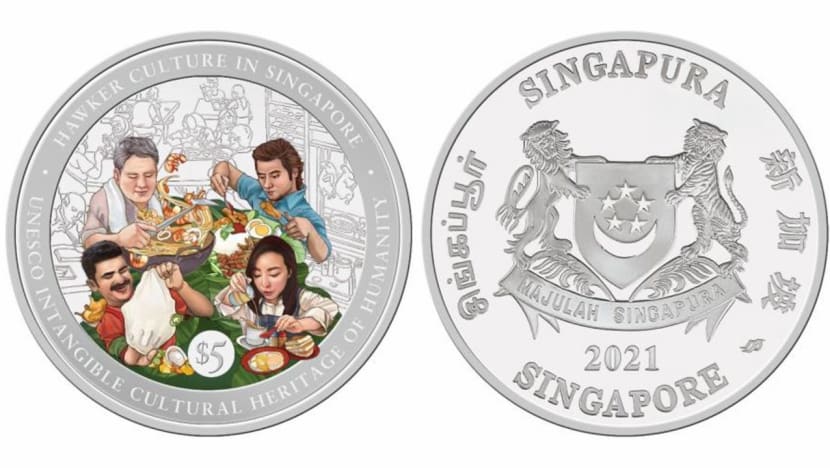
Five years later, UNESCO's recognition of hawker culture as a part of humanity's cultural heritage was also celebrated in coins.
They featured hawkers preparing Hokkien mee, nasi lemak and roti prata as well as kaya toast with soft-boiled eggs and kopi.

















